Company: InMobi
Designation: Data Scientist
Year of Experience Required: 0 to 4 years
Technical Expertise: SQL, Python/R, Statistics, Machine Learning, Case Studies
Salary Range: Competitive, based on experience
InMobi, an Indian multinational mobile advertising technology company, is a global leader in providing platforms for businesses to advertise their products and services. Known for its data-driven approach and innovative solutions, InMobi targets specific customer segments to deliver personalized advertising experiences. If you’re preparing for a Data Science role at InMobi, here’s a detailed breakdown of their interview process and the types of questions you can expect.
InMobi Data Science Interview Question

If you are preparing for a Data Analyst Job for inMobi, make sure to go through the following questions.
Interview Process
The InMobi Data Science interview process typically consists of 5 rounds, each designed to evaluate different aspects of your technical and analytical skills:
Round 1 – Telephonic Screening
Focus: Basic understanding of Data Science concepts, SQL, and Python/R.
Format: You’ll be asked to explain your projects and solve a few coding or SQL problems.
Round 2 – Walk-in/Face-to-Face Technical Round
Focus: Advanced SQL, coding, and problem-solving.
Format: You’ll solve problems on a whiteboard or shared document.
Round 3 – Project Analysis
Focus: Deep dive into your past projects.
Format: You’ll be asked to explain your approach, tools used, and the impact of your work.
Round 4 – Case Studies
Focus: Business problem-solving and data-driven decision-making.
Format: You’ll be given a real-world scenario and asked to propose solutions.
Round 5 – Hiring Manager Round
Focus: Cultural fit, communication skills, and long-term career goals.
Format: Behavioral questions and high-level discussions about your experience.
Difficulty of Questions
SQL – 8/10
1) How can you retrieve customers who have placed at most 3 orders?
SELECT customer_id, COUNT(order_id) AS total_orders
FROM orders
GROUP BY customer_id
HAVING total_orders <= 3;2) How do you find the top 3 products based on total sales quantity?
SELECT product_id, SUM(quantity) AS total_sold
FROM order_details
GROUP BY product_id
ORDER BY total_sold DESC
LIMIT 3;3) How can you find the employees who have been working the longest in the company?
SELECT employee_id, name, joining_date
FROM employees
ORDER BY joining_date ASC
LIMIT 5;4) How do you find orders with total amounts within a specific range?
SELECT order_id, SUM(price * quantity) AS total_amount
FROM order_details
GROUP BY order_id
HAVING total_amount BETWEEN 200 AND 500;5) How can you find customers who have purchased more than one type of product?
SELECT customer_id, COUNT(DISTINCT product_id) AS unique_products
FROM orders
GROUP BY customer_id
HAVING unique_products > 1;🚀 Master MySQL Interviews! Get expert answers to all MySQL interview questions in one power-packed eBook. – 550 SQL Interview Questions to crack Any Analytics Interview.
R/Python – 7/10
1) Write a Python function to calculate the Pearson correlation coefficient between two lists of numbers.
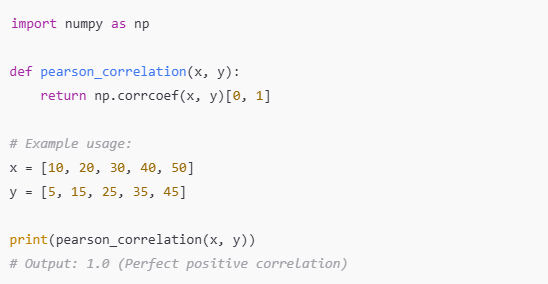
2) Write a Python function to find and return duplicate rows in a Pandas DataFrame.
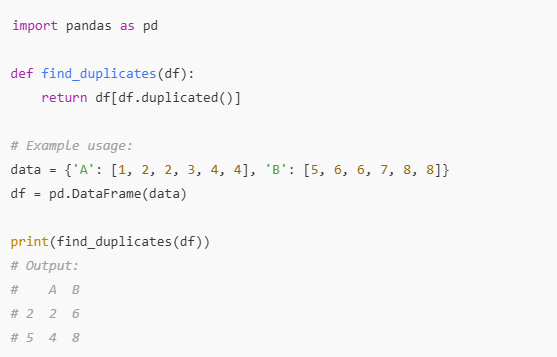
3) Write a Python function to convert categorical data in a Pandas DataFrame column into numerical labels using Label Encoding.
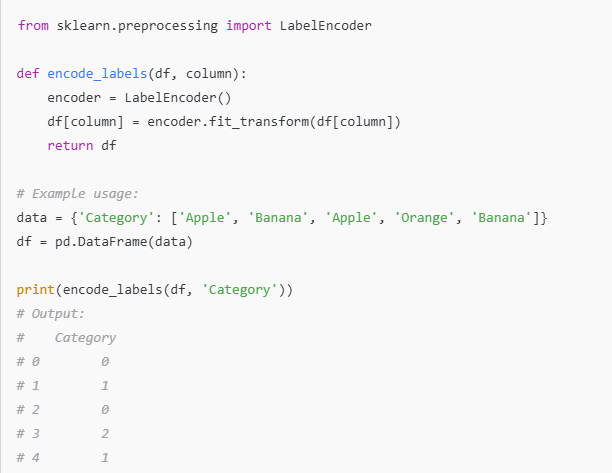
4) Write a Python function to compute a confusion matrix for a classification model.
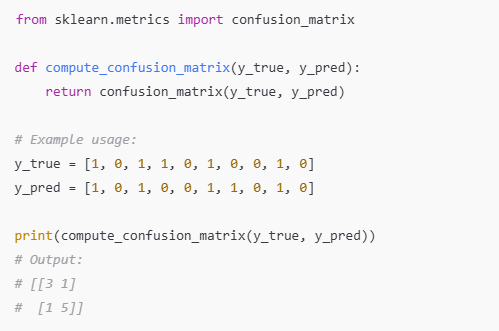
5) Write a Python function to find the most frequent element in a given list.
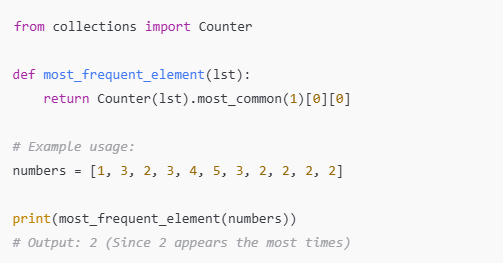
🚀 Become a Full Stack Analytics Pro! Get the ultimate guide to mastering analytics and landing your dream job. Grab your copy now! -> 2200 Most Asked Analytics Interview Questions
Statistics/ML
1) Difference Between Supervised and Unsupervised Learning
To understand how machine learning models learn, consider these key differences:
- Supervised Learning – Uses labeled data, where input-output pairs are known (e.g., classification, regression).
- Unsupervised Learning – Uses unlabeled data to identify patterns and structures (e.g., clustering, dimensionality reduction).
- Examples – Supervised: Spam detection, price prediction. Unsupervised: Customer segmentation, anomaly detection.
2) How to Prevent Overfitting in Machine Learning Models
To ensure a model generalizes well to new data, follow these techniques:
- Cross-Validation – Use k-fold cross-validation to test model performance on different subsets.
- Regularization – Apply L1 (Lasso) or L2 (Ridge) regularization to prevent large coefficients.
- More Data – Increase training data to help the model capture true patterns.
- Dropout (for Neural Networks) – Randomly drop neurons during training to reduce dependency.
- Pruning (for Decision Trees) – Remove less important branches to simplify the model.
3) Bagging vs. Boosting in Ensemble Learning
Both techniques improve model performance but work differently:
- Bagging (Bootstrap Aggregating) – Trains multiple models independently on random subsets and averages results (e.g., Random Forest).
- Boosting – Trains models sequentially, where each new model corrects previous errors (e.g., AdaBoost, XGBoost).
- Key Difference – Bagging reduces variance, while boosting reduces bias.
4) Understanding the Bias-Variance Tradeoff
To build a well-generalized model, consider these factors:
- High Bias (Underfitting) – Model is too simple, leading to poor performance on both training and test data.
- High Variance (Overfitting) – Model is too complex, performing well on training data but poorly on test data.
- Solution – Find a balance by adjusting model complexity, using cross-validation, and applying regularization.
5) Purpose and Benefits of PCA (Principal Component Analysis)
PCA helps in dimensionality reduction while preserving key information:
- Transforms Features – Converts correlated variables into independent principal components.
- Reduces Dimensionality – Helps in handling high-dimensional data for efficiency.
- Improves Performance – Reduces overfitting and speeds up training.
- Use Cases – Image compression, feature selection, and exploratory data analysis.
🚀 Crack Any ML Interview! Get 1,200 Machine Learning Interview Questions in one ultimate eBook. Boost your confidence and ace your next interview! – Machine Learning 1200 Interview Questions
Case Study
Problem Statement:
InMobi wants to improve its ad click-through rate (CTR) prediction model to increase ad engagement and revenue. Your task as a Data Scientist is to analyze historical ad impression data, identify key features influencing CTR, and propose an approach to optimize ad targeting.
Dataset Overview:
You have access to a dataset containing historical ad impressions and user interactions. The dataset includes:
- Ad_ID – Unique identifier for each advertisement
- User_ID – Unique identifier for the user shown the ad
- Timestamp – Date and time of the ad impression
- Ad_Category – Category of the ad (E-commerce, Travel, Gaming, etc.)
- Device_Type – Type of device used (Mobile, Tablet, Desktop)
- Operating_System – OS of the device (iOS, Android, Windows, etc.)
- Location – City or region of the user
- Previous_Clicks – Number of times the user has clicked on ads in the past
- Ad_Position – Placement of the ad (Top, Middle, Bottom of the screen)
- CTR_Label – 1 if the user clicked the ad, 0 if not
Key Questions to Answer:
1. What factors influence ad click-through rate (CTR)?
- Does ad category affect CTR?
- Are users on mobile devices more likely to click ads than those on desktops?
- How does ad position on the screen impact CTR?
2. How can InMobi improve ad targeting for higher engagement?
- Can InMobi use user behavior data to serve more relevant ads?
- How does historical click behavior impact future ad interactions?
- Should InMobi adjust ad placement dynamically based on CTR patterns?
3. How can InMobi optimize real-time bidding (RTB) for advertisers?
- Can high-CTR users be prioritized in bidding strategies?
- How does location-based targeting impact ad effectiveness?
- Should ad delivery frequency be adjusted for better engagement?
Key Insights & Business Recommendations
1. Understanding Factors Affecting CTR
- Mobile Users Have Higher CTR: Ads shown on mobile devices receive more clicks than those on desktops, indicating mobile-first ad strategies are beneficial.
- Ad Position Matters: Ads placed at the top of the screen get significantly higher clicks compared to ads in the middle or bottom.
- User Behavior Drives Engagement: Users with higher past click activity tend to engage more with ads, suggesting behavior-based targeting can increase CTR.
2. Improving Ad Targeting Strategies
- AI-Powered Personalized Ad Recommendations: Using machine learning models, InMobi can analyze past user interactions and serve highly relevant ads.
- Dynamic Ad Placement Adjustments: By continuously analyzing CTR patterns, InMobi can optimize ad positions in real-time to increase engagement.
- Location-Based Ad Targeting: Users in urban regions show higher engagement with ads related to e-commerce and travel, while users in suburban areas prefer local services and entertainment.
3. Optimizing Real-Time Bidding (RTB) for Advertisers
- Bidding More for High-CTR Users: Advertisers should prioritize bidding on users with historically high engagement, improving ROI.
- Reducing Ad Fatigue: Showing the same ad repeatedly decreases CTR. InMobi should implement ad frequency capping to avoid user fatigue.
- A/B Testing for Ad Effectiveness: Running A/B tests on different ad creatives and placements can provide insights into optimal ad designs for better CTR.
🚀 Basic, you can practice a lot of case studies and other statistics topics here –
https://thedatamonk.com/data-science-resources/
🚀 Get The Data Monk 23 eBook Bundle covering everything from ML to SQL. Your all-in-one prep for cracking any interview! -> The Data Monk 23 e-book bundle 📚
The Data Monk services
We are well known for our interview books and have 70+ e-book across Amazon and The Data Monk e-shop page . Following are best-seller combo packs and services that we are providing as of now
- YouTube channel covering all the interview-related important topics in SQL, Python, MS Excel, Machine Learning Algorithm, Statistics, and Direct Interview Questions
Link – The Data Monk Youtube Channel - Website – ~2000 completed solved Interview questions in SQL, Python, ML, and Case Study
Link – The Data Monk website - E-book shop – We have 70+ e-books available on our website and 3 bundles covering 2000+ solved interview questions. Do check it out
Link – The Data E-shop Page - Instagram Page – It covers only Most asked Questions and concepts (100+ posts). We have 100+ most asked interview topics explained in simple terms
Link – The Data Monk Instagram page - Mock Interviews/Career Guidance/Mentorship/Resume Making
Book a slot on Top Mate
For any information related to courses or e-books, please send an email to [email protected]